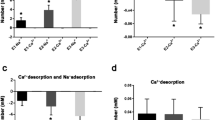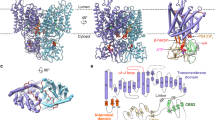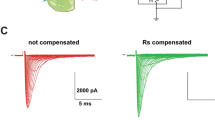Abstract
THIS communication is prompted by a report of Spyropoulos, Tasaki and Haywood1 that they were unable to confirm the findings of Gaffey and Mullins2 that in Chara there is an efflux of chloride ions during an action potential. It would appear, however, that the experimental conditions of Spyropoulos et al. were not such as to make a demonstration possible. This is shown by the following calculations. A Nitella cell, 0.06 cm in diameter by 4 cm in length, has a volume of 0.011 cm3 and very nearly 0.66 cm2 of surface area. The volume of the cell is nearly all sap and if its [Cl] is taken as 100 µmole/cm3 then a cell contains 1.1 µmole Cl−. With a membrane capacity of 1 µF/cm2 and an action potential of 100 mV, 1 × 10−12 mole of Cl− must be lost to produce the potential change, per cm2 or 0.66 pmole for the Nitella cell. The cells used by Spyropoulos et al.. had 1,000 c.p.m. chlorine-36 and 1 µmole Cl−, so that each c.p.m. represented 10−9 mole Cl− and the expected loss for an action potential is about 1/1,000th of a c.p.m. Forty stimuli were delivered—this would increase the efflux but the efflux was collected in 20 fractions so that the total efflux to be expected for the experiment would be 2/1,000ths of a c.p.m. in each fraction. In the experiments with Chara2 the quantities of Cl− lost were 500–5,000 times greater than that calculated above and were equivalent to K+ loss, while the action potential was 200 mV, or considerably greater than that in Nitella. The K+ loss demonstrated by Spyropoulos et al. ought to equal Cl− loss, but in the absence of information on the specific activity of their potassium-42 in the cell no calculation is possible. The specific activities of potassium-42 and chlorine-36 as supplied by the Atomic Energy Commission, Oak Ridge, are as 2.000 : 1, and for equal loading times the intracellular potassium would be preferentially labelled. What does seem clear is that the extent to which cells were labelled with chlorine-36 was inadequate to detect an extra efflux of activity (over the resting Cl− efflux and over background).
This is a preview of subscription content, access via your institution
Access options
Subscribe to this journal
Receive 51 print issues and online access
$199.00 per year
only $3.90 per issue
Buy this article
- Purchase on SpringerLink
- Instant access to full article PDF
Prices may be subject to local taxes which are calculated during checkout
Similar content being viewed by others
References
Spyropoulos, C. S., Tasaki, I., and Haywood, C., Science, 133, 2064 (1961).
Gaffey, C. T., and Mullins, L. J., J. Physiol., 144, 505 (1958).
Hope, A. B., Nature, 191, 811 (1961).
Findlay, G. P., Nature, 191, 812 (1961).
Frankenhaeuser, B., and Hodgkin, A. L., J. Physiol., 137, 218 (1957).
Author information
Authors and Affiliations
Rights and permissions
About this article
Cite this article
MULLINS, L. Efflux of Chloride Ions during the Action Potential of Nitella. Nature 196, 986–987 (1962). https://doi.org/10.1038/196986a0
Issue date:
DOI: https://doi.org/10.1038/196986a0
This article is cited by
-
Anion channels as central mechanisms for signal transduction in guard cells and putative functions in roots for plant-soil interactions
Plant Molecular Biology (1995)
-
The excitability of plant cells: With a special emphasis on characean internodal cells
The Botanical Review (1994)
-
Plasmalemmal, voltage-dependent ionic currents from excitable pulvinar motor cells ofMimosa pudica
The Journal of Membrane Biology (1993)
-
Action potentials inAcetabularia: Measurement and simulation of voltage-gated fluxes
The Journal of Membrane Biology (1991)
-
Quantitative analysis of outward rectifying K+ channel currents in guard cell protoplasts fromVicia faba
The Journal of Membrane Biology (1989)



